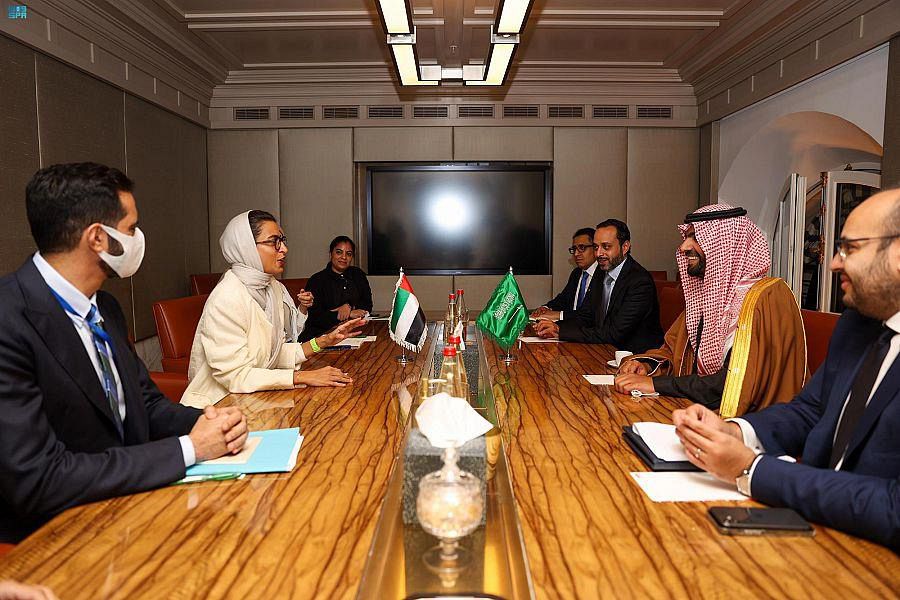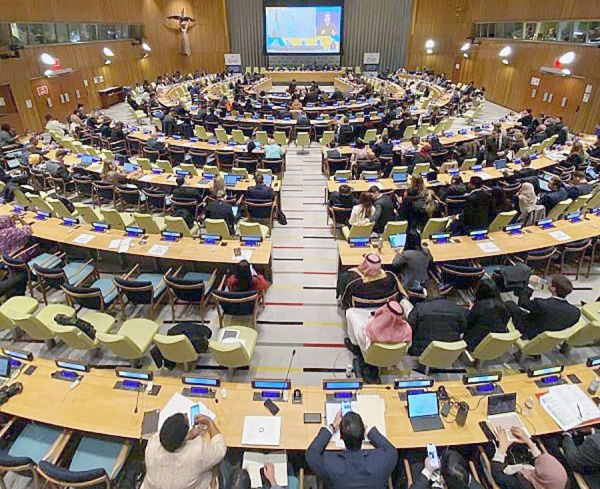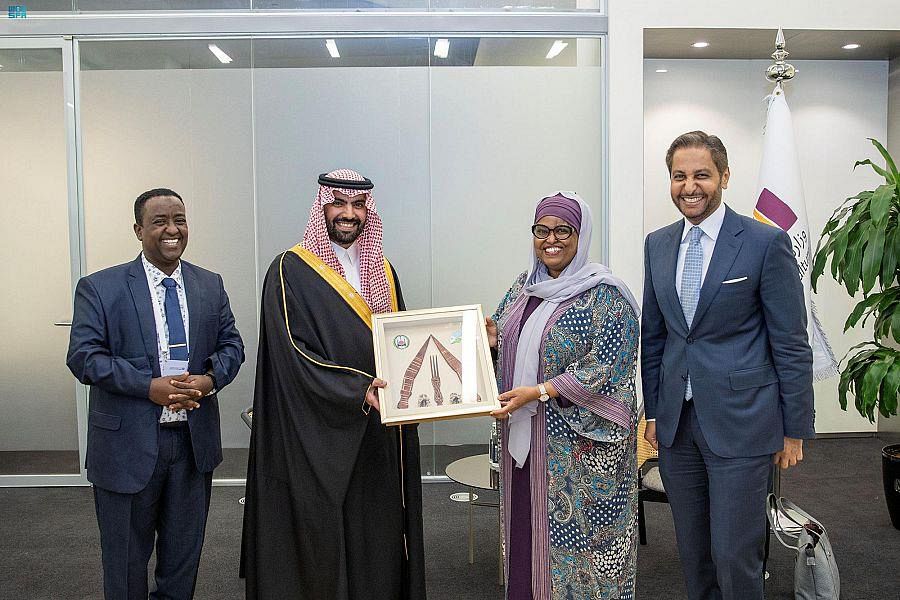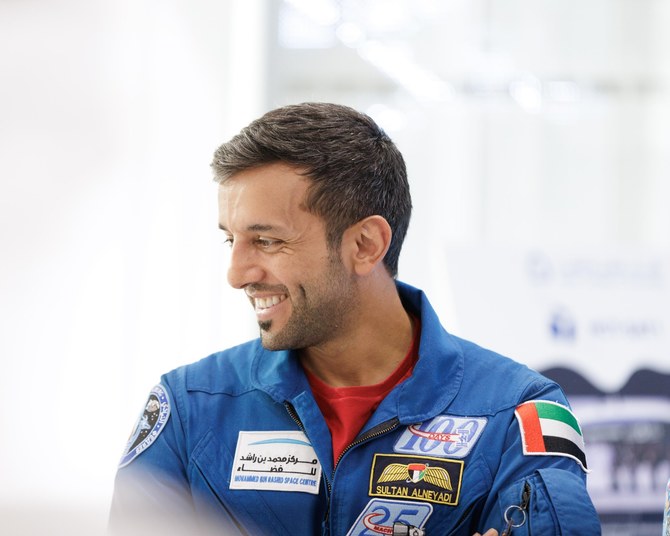
In interview with Arab News, Shamma Al-Mazrui discussed the Arab Youth Priorities Survey findings
She said a country’s “return on investment” depends on how much it invests in its youth
DUBAI: If the quality of its youth is what determines the kind of future a nation will have, then the Arab world can draw strength from its share of the global supply.
People between the ages of 15-35 make up almost 34 percent of the region’s population — the highest concentration of youth in the world.
This young population, more educated than ever, has a real opportunity to make significant and positive contributions to the economic and social development of the region, according to a recent report by the Arab Youth Center, the “Arab Youth Priorities Survey.”https://www.arabnews.com/node/1736996/middle-east “It’s nice to see that all youth around the Arab world are trying to build a world that works, that is based on the values we see.”
In the survey’s other highlights, 71 percent of respondents expressed their keenness for a high-quality educational system, 55 percent would like to receive free education, and 33 percent want to see more curriculums that match the labor market’s needs.
The “Arab Youth Priorities Survey” categorizes Arab states into three groups – of high, mid and low purchasing power — while taking into account the significant macroeconomic differences between them. Al-Mazrui underscored the range of challenges within the education and health care sectors that young Arabs face. “Some youth just want access to education. (For) others who have wealth, it’s more about the quality of education — to be the best around the world,” she said.
The situation was similar regarding the quality and affordability of health care and medicine across the region. Al-Mazrui believes there is no limit to what technology can achieve, whether it is innovation in the field of robotic medical assistance or the possibility of medicine delivery via drones.
THE CRITICAL PRIORITIES OF ARAB YOUTH
Over the past decade, young people across the Arab region have been forced to confront the consequences of popular uprisings, prolonged conflicts and collapsing economies. The findings of the “Arab Youth Priorities Survey” reflect these realities while highlighting the hopes of new generations for a more prosperous future. The survey was conducted by the UAE’s Arab Youth Center, whose chairman is Sheikh Mansour bin Zayed Al-Nahyan, UAE’s deputy prime minister and minister of presidential affairs.
It was based on the responses of 7,000 young people in 21 Arab countries in the 15-34 age group, and found that the top three priorities of today’s Arab youth are stability, education and health. Analysts say the findings should be viewed in the context of the continued upheavals in the Middle East and North Africa. Since 2011, countries such as Syria, Libya, Yemen, Iraq and Lebanon have experienced severe disruptions as a result of political unrest, regime crackdowns and ensuing conflicts.
During this period, many families and children have lost their homes, jobs and rights to education and health care, according to Abeer Alnajjar, associate professor at the American University of Sharjah and researcher in Middle East politics. “Achieving their aspirations has become harder for the region’s youth with the future of these countries appearing gloomy in the near term,” she told Arab News. “The priorities in question have better prospects in some countries than others due to the differences in their economic, political and security conditions. But the fallout of the COVID-19 pandemic has made their economic, educational and employment situations worse.”
The current conditions will not equip future generations with the tools they need for a better life, she said, adding that they would in fact result in higher levels of illiteracy, violence and instability. To be sure, the state of Arab youth is not the same in every country, said Alnajjar. “On the one hand you have the well-off, highly educated elites. On the other hand, there are the underprivileged — the displaced, the unemployed, the youth who are out of school and out of social and health care systems.”
Noting that some Arab countries offer higher levels of security, health care, educational standards and opportunities for their youth, she said that a pan-Arab initiative could have a significant impact across the region. Alnajjar said the priorities identified by the Arab Youth Center study call for “major reforms” in the fields of education and employment. “Education is the starting point of the welfare of the society,” she said. “However, new approaches to education are needed as information and communication ecosystems, affordability, opportunities and risks are changing.”
Close to half of the survey’s respondents said that they wanted to live in environments and communities free of domestic violence. Commenting on the finding, Alnajjar said that economic welfare, respect for human rights, access to education, equal opportunity and the rule of law are all important pillars of social reform. “When people are taught how to think and talk, they rarely resort to violence,” she told Arab News.
While only time will tell what happens to today’s big ideas in the fields of science and technology, a more pressing question is how Arab governments can provide their youth with the opportunities they need to flourish, succeed and reach their full potential.
“At the end of the day, as government officials, we are designing. We are designers,” Al-Mazrui said. “How do we design the best ecosystem for a certain section of the population to thrive?”
Answering her own question, she pointed to the UAE youth ministry’s tasks and duties in the context of the seven crucial transitional stages that young people go through.
“There’s school to university; university to higher education; higher education to the labor market; the labor market to starting a family; finding housing; going to the national service in the UAE; and sometimes the labor market back to school for those who do their MBA,” she said.
With these stages in mind, Al-Mazrui likened her role as a youth minister catering for 50 percent of the UAE’s population to that of “an orchestra conductor” — working in coordination with government departments to address the challenges facing this vital demographic.
“If you have a garden, you’ll have different plants or trees. Similarly, there are the elite and engaged youth, the smart youth and the dropout youth, the youth who are orphans or who have disabilities,” she said.
“When you don’t have a ministry of youth, you’re basically excluding all these characteristics and segments of the young population. Our job is to include them all, to understand that each one needs a different kind of strategy.”










